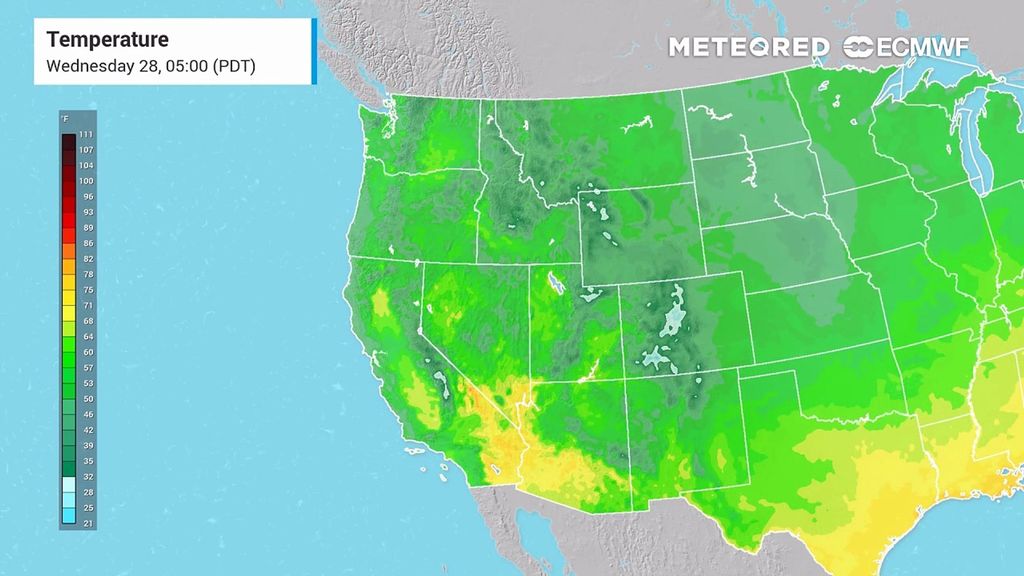Heat is Coming for California as the State's HeatRisk Climbs to Its Highest Levels of the Year so Far
California is bracing for potentially record-breaking heat Friday and through the weekend. Much of the state will reach its highest HeatRisk level so far this year. The heatwave hits as spring transitions into summer.
- More information: DOGE Cuts to Weather Balloons Leave NWS Offices Without Crucial Data

A shifting weather pattern in the West will settle in as meteorological spring comes to a close. Meteorological summer starts on Sunday. California is about to bake with temperatures soaring to mid-summer levels, and potentially shattering records in some spots. A strong ridge of high pressure is building over the western U.S., and the heat dome it creates will appear briefly but be intense.
Temperatures will warm across interior NorCal this week, peaking on Friday/Saturday when Major HeatRisk and widespread triple digits return to the region.
— NWS Sacramento (@NWSSacramento) May 27, 2025
Plan ahead for the heat and be sure to practice heat safety! #CAwx pic.twitter.com/mHwGitMng1
To help gauge the danger of heat-related conditions, the National Weather Service (NWS) and the Centers for Disease Control and Prevention (CDC) developed the HeatRisk tool. It assesses how atypical the heat is for the season and the corresponding health threats it might pose. The tool offers a seven-day outlook and organizes the forecast into four distinct levels of risk.
The HeatRisk tool was first implemented by the National Weather Service in California in 2013. By 2017, its coverage had broadened to include the Western United States. In April 2024, the NWS, working with the CDC, expanded the tool nationwide to the entire contiguous U.S.
Highest HeatRisk Levels So Far This Year For Some
The HeatRisk for most of interior California is expected to climb into the moderate to major category, levels two and three out of four, respectively, on Friday. The highest HeatRisk is expected to focus on California’s Central Valley, where a large portion of the region will reach the moderate range. “This level of heat affects anyone without effective cooling and/or adequate hydration,” according to the NWS HeatRisk category definition. “Impacts likely in some health systems, heat-sensitive industries and infrastructure.”
By Friday and Saturday, daily high temperatures will begin pushing record levels for this time of the year across parts of the Western U.S. On these maps, you'll see NWS HeatRisk, which is an experimental color-numeric-based index that provides a forecast risk of heat-related pic.twitter.com/Nr3yljh10S
— National Weather Service (@NWS) May 27, 2025
Portions of the Central Valley will still be in the moderate HeatRisk category on Saturday, but the area impacted by this “red” category will shrink somewhat. By Sunday, most of California will be in the minor category, level one out of four. A smaller portion compared to Saturday will be in the moderate category. This is a reflection of the heatwave peaking on Friday and Saturday and then weakening by Sunday.
Climate Change Contribution?
Most of California will experience temperatures climbing to around 10 to 20 degrees above average on Friday and Saturday. That translates into temperatures topping 100 degrees in many spots both days. By Sunday, the hottest spots are expected to be in the middle to upper 90s.
Heat is far and away the leading cause of weather-related deaths in the United States, according to the National Weather Service. The annual 30-year average number of fatalities was more than the deaths caused by flooding, tornadoes, and hurricanes combined. Our warming world is exacerbating heat waves. Climate Central found that a heat wave that hit Texas in mid-May was supercharged by climate change.
On this day in 2022, the low was just 74°then the 2nd warmest May 19th low on record.
— Shel Winkley (@shelwinkleywx) May 19, 2025
Using attribution science, we know unusually warm May morning like this is at least 4x MORE likely due to human-caused climate change.
Aka it would be extremely rare without climate change. pic.twitter.com/3I9ovUEpbs
The coming heat wave may signal a sultry summer for California. Through April, this is the state’s 12th warmest start to a year on record. Last year, California had its warmest summer on record, more than five degrees above the 1901-2000 average. It had its 5th warmest year on record in 2024, nearly three degrees above average.








